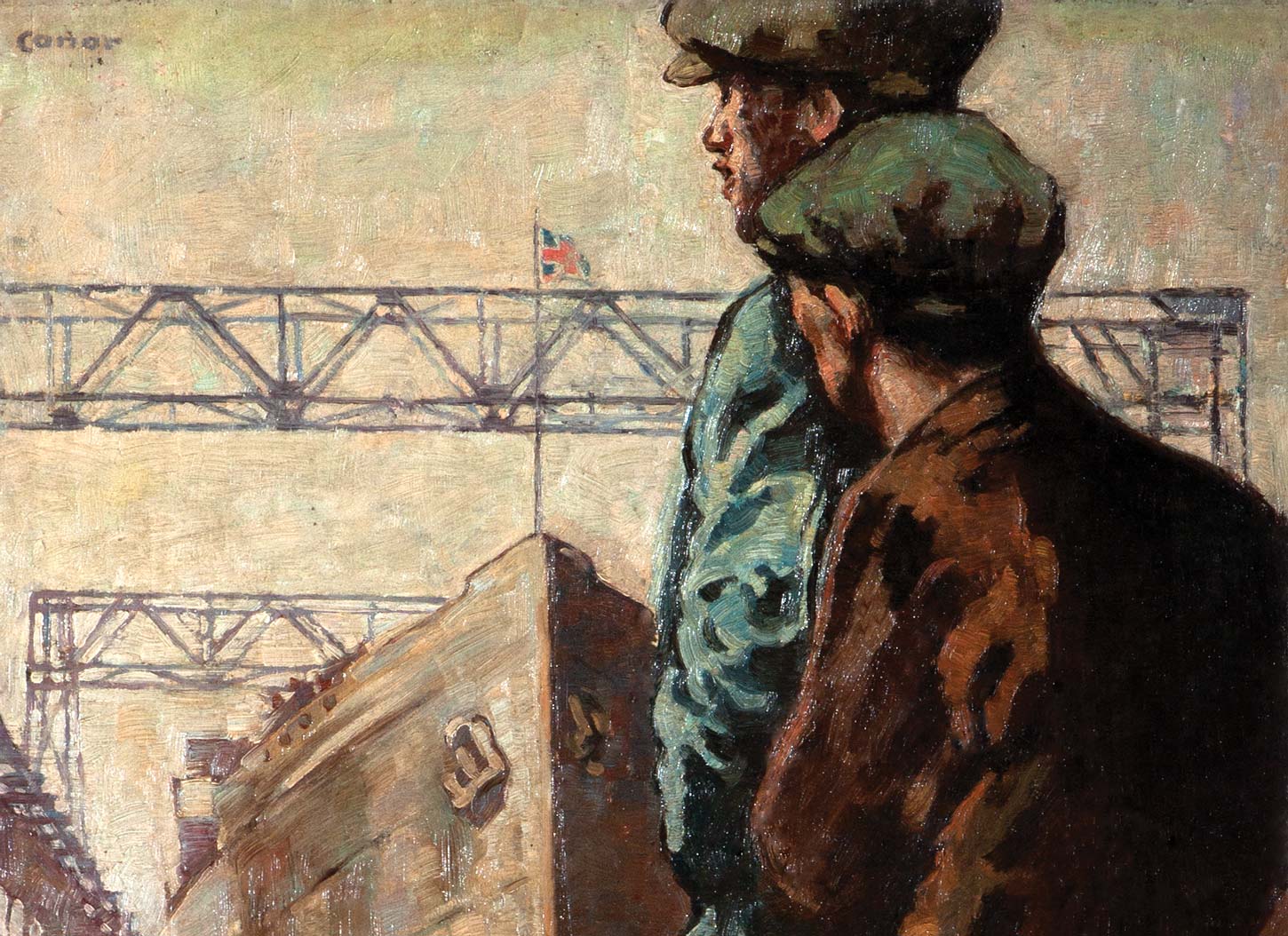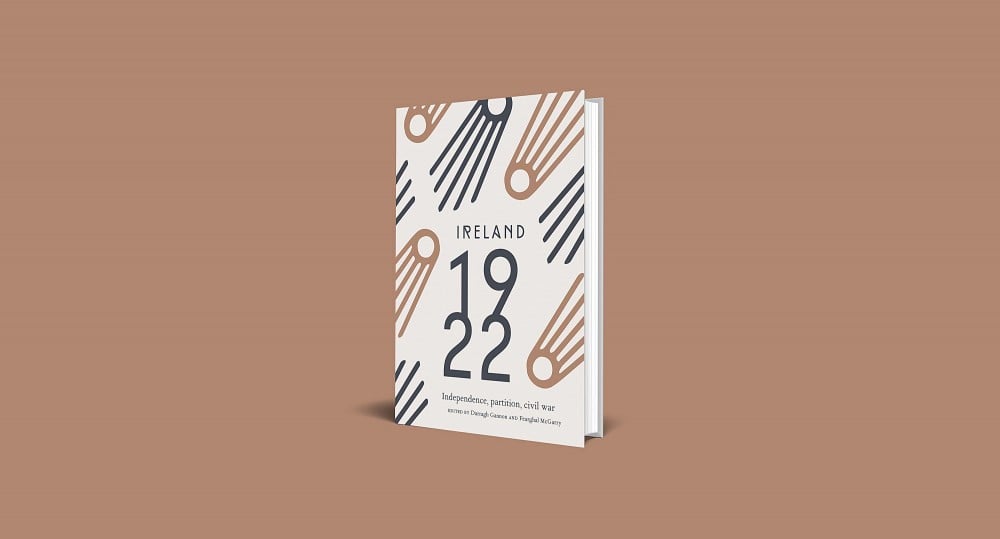3 June 1922: James Craig Advocates Flying the Flag
‘A Visible Sign of Our Loyalty’: The Iconography of Partition
by Stephen O’Neill
On touring Belfast in the turbulent June of 1922, an English visitor to the city suggested to James Craig that there was ‘just a little too much of the Union Jack in view in Belfast at the present moment to be healthy’. Unsurprisingly Craig was not impressed. Relaying this tale in an extended interview with the British tabloid The People, published on 3 June, the leader of northern unionism described the Union Jack as a symbol of loyalty that was being taken for granted by the English public, ‘an outward and visible sign of our loyalty to the Throne and of our pride in Empire Citizenship’. This image of Belfast proudly demonstrating its attachment to the union was, for Craig, a crucial reminder of unionist loyalty in a period of grave anxiety. In particular, this display of fidelity was a reminder of what he saw as their ‘duty as loyal representatives of a loyal people to say that we would have nothing more to do with the Boundary Commission’.¹ Writing in the wake of the Better Government of Ireland Act (1920) and the Anglo-Irish Treaty (1921), Craig’s plea to the British public was reflective of the deep insecurity about territory that then beleaguered the operations of his government.
Yet, in his search for symbolic currency, Craig was also reflecting a wider trend on the island. Jonathan Bardon writes that symbolism, primarily in the form of the oath of allegiance, had been ‘the central issue’ of the Treaty debates, despite Deputy Seán Mac Eoin’s claim that these ‘symbols, recognitions, shadows’ held ‘very little meaning’ to the Irish public.² In the aftermath of the debates, however, icons and emblems took on a new significance, with the Irish Free State adopting already existing emblems and commissioning the production of new national symbols. From renaming streets to painting pillar-boxes, removing statues and developing a national coinage, outward and visible signs retained an enduring appeal to all sides of the ‘Irish’ question.
In the early years of partition, Robert Lynch has observed, both governments were haunted by ‘a crippling lack of legitimacy’, a problem exacerbated by the presence of significant religious and political minorities in each state.³ As Craig’s reference to the Boundary Commission suggested, territorial anxieties cast a long shadow over the operations of these new partition states, with each actively engaged in a dispute over the shape and status of the new border on the island. Perhaps foremost of the iconographies, emblems and flags adopted as weapons in this dispute were the various maps that had been published as state and anti-state propaganda since the question of partition had been raised. These maps, on display in state handbooks, in political pamphlets and at public exhibitions, were a more obvious intervention into the territorial dispute that had been engendered by the activities during previous decades. The Free State asserted its own territorial claims by commissioning a Handbook of the Ulster question (1923), with extensive maps and charts; the six-county government was, for its part, actively engaged in producing a periodical, the Ulster Bulletin (1922–25), and more generally courting the favour of British newspapers. All of these productions deployed maps detailing their claims and repudiating those of the opposition. In March 1922, for example, Craig had met with another English visitor, the London Illustrated News artist-correspondent L. Raven Hill. The artist, with the help of Craig, sketched a rough map of ‘Ulster’ and the iterations of its border as they had developed from 1914 to 1922, to which Craig added the signed comment: ‘This is the boundary question’.⁴
For both states, however, imaging the boundary question went well beyond publishing maps and waving flags. As Peter Leary notes, Ireland’s partitioning, a process established by acts of the Westminster Parliament with no Irish vote in favour, was
neither the most desired nor most readily envisioned outcome to the conflicts that preceded its implementation. With the United Kingdom, Ireland, and even Ulster all divided, no previously ‘imagined community’ was left intact.⁵
The cultural traditions that had preceded the division of the island did not necessarily provide any pre-history for this division, but they were quickly recast by each new state as the precedent for their individual territorial claims. Binary constructions of urban against rural, Protestant against Catholic, idealism against realism, and many others, became a dominant motif across the political and cultural imaginations of these new states, and each sought historical and contemporary illustrations of their visions. The Irish Free State commissioned and displayed subject portraits by John Lavery and landscape paintings by Jack Yeats, while the northern state—beset, in part, by a perceived cultural impoverishment—deliberately sought to champion the art and artists of Belfast as a rival to Dublin. As an article in the Ulster Bulletin, praising the work of a new Belfast painter, had argued: ‘until a few months ago the whole attitude in most political and cultural quarters was to belittle Belfast and all that to it pertained’.⁶
The artist to which this article had referred was William Conor, who had been commissioned by the ‘Ulster’ government to paint the first sitting of its parliament. Conor, also commissioned by the Free State in 1922, became known in this period primarily for his depictions of the industry of Belfast: the Westminster Gazette had called him ‘the delineator of Ulster industrialism’ in February 1922.⁷ The evidence for this new title was plentiful: by then, Conor had turned away from his early entanglements with rural landscapes to paint the mills and shipyards that had so dominated the unionist imaginary in the early twentieth century, and that served for some as an artistic rendition of the social and economic benefits of the Union. His ‘Men of Iron’ (1922), which had appeared at the same time as his painting of the northern parliament, captured some of the dominant motifs within this imaginary. With the titular men placed in the foreground of the picture, of the painting. The faceless subjects on the right—the ‘Queen’s Islandmen’, championed as symbols of the Belfast workforce—at once seem to be taller than the ship and gantries before them, but are also turned towards it. Perhaps most importantly, this ship carries a Union Flag on its jackstaff—very clearly locating the painting in the Belfast shipyards.⁸ Taken together, the icons and emblems within ‘Men of Iron’—the shipyard, the workers and the flag—bring to life many of the outward and visible signs that Craig and his government were trying to emphasise as proof of a distinct northern culture in an atmosphere of grave anxiety about the future of the northern state.
Extracted from Ireland 1922 edited by Darragh Gannon and Fearghal McGarry and published by the Royal Irish Academy with support from the Department of Tourism, Culture, Arts, Gaeltacht, Sport and Media under the Decade of Centenaries 2012-2023 programme. Click here to view more articles in this series, or click the image below to visit the RIA website for more information.






















